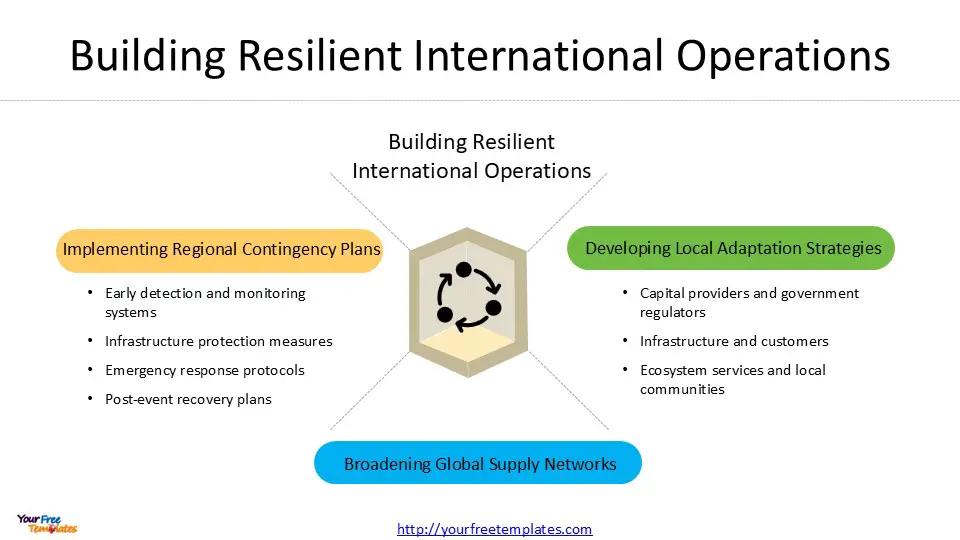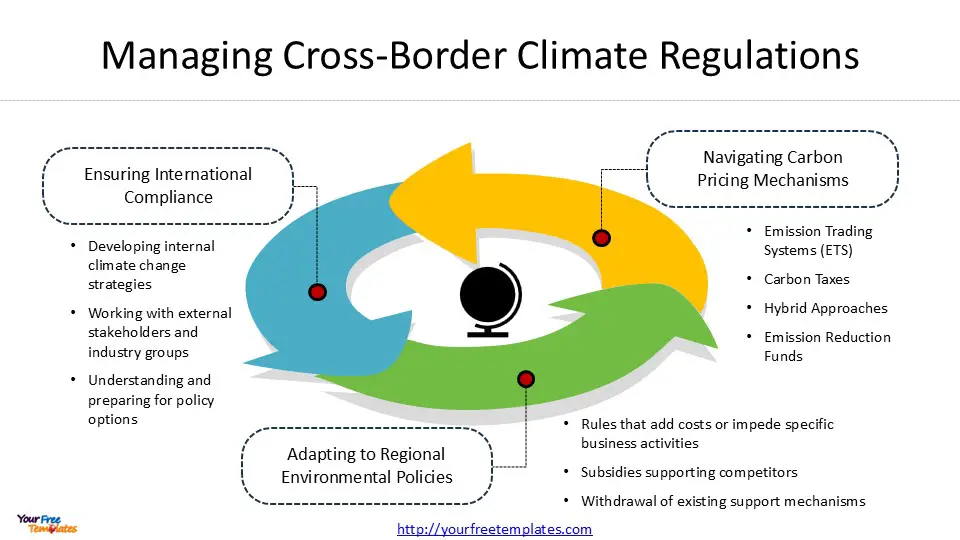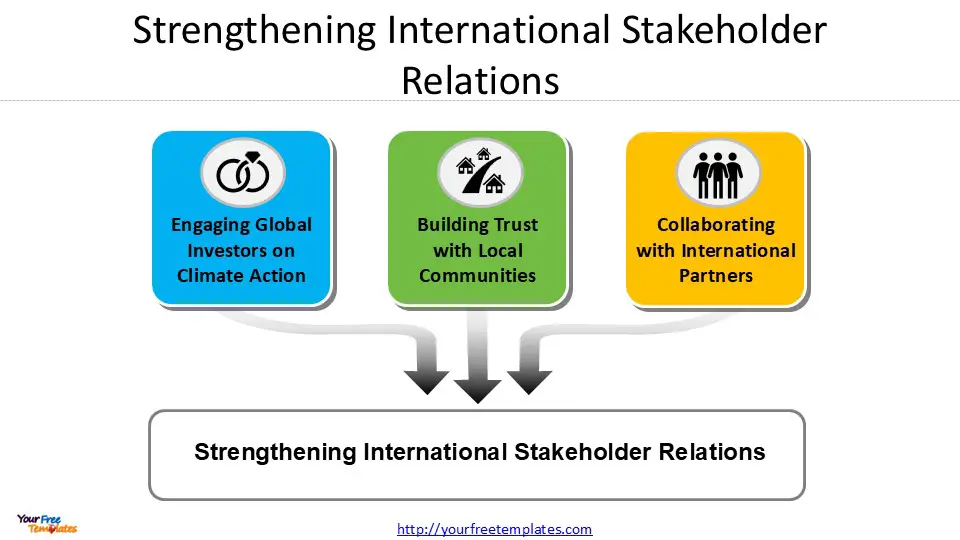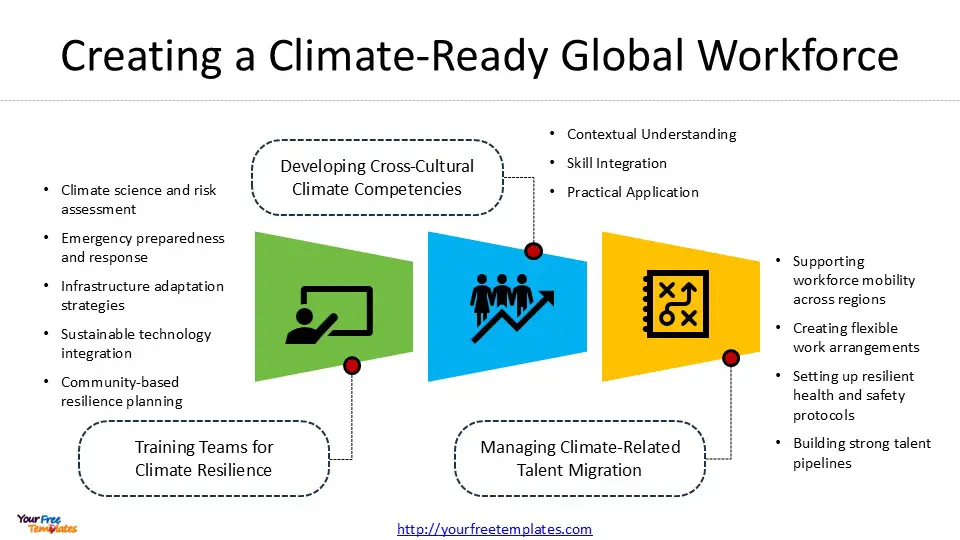The impact of climate change on international business strategies has been the focus under the background of carbon netrual. Climate change has evolved beyond environmental concerns and now shapes how international business operates. Companies worldwide face major climate-related risks to their operations – recent data puts this figure at 72%.
Dealing with climate change’s effects on international business strategies needs a complete plan of action. Businesses must adapt to survive and grow as they face supply chain disruptions and changing regulations in this shifting landscape.
This piece shows businesses how to transform climate-related challenges into opportunities. You’ll find practical strategies to build stronger operations, handle cross-border regulations, and deepen stakeholder relationships in global markets.
What you’ll learn:
- Tools to spot and track climate risks in different markets
- Steps to create resilient international operations
- Guidelines to handle complex cross-border climate regulations
- Ways to connect with global stakeholders
- Tips to prepare your workforce for climate challenges
At the end of this post, you can download our the impact of climate change on international business strategies PowerPoint template to fit your purpose. As the same diagram PowerPoint template series, you can also find our Blockchain in Renewable Energy, SPACE Matrix, Bowman’s Strategy Clock, Value Chain Analysis, Climate Change, Carbon Neutral Meaning, Renewable Energy Sources, Generative AI, Circular Economy, Blue Sea Strategy, 2025 Calendar with Holidays, The 7 Habits of Highly Effective People, Six Thinking Hats, Pareto Chart, Occam’s Razor, Data Mining, marketing segment, Porter’s five forces, SWOT Analysis, GE Matrix, BCG Matrix, Artificial Intelligence, National Diamond and BlockChain PowerPoint templates.

Assessing Global Climate Risks Across Markets, step 1 of navigating the impact of climate change on international business strategies
Dramatic shifts in climate risks now affect international business operations. Our analysis shows that over 60% of S&P 500 companies, with a market capitalization of $18 trillion, face high exposure to at least one type of climate-related physical risk 1.
Mapping Physical Climate Risks by Region
Companies in the S&P 500 Index own physical assets across 68 countries 1. The most important physical risks include:
- Heatwaves and wildfires
- Water stress and droughts
- Hurricanes and extreme weather events
- Rising sea levels
Asset location, not industry sector, serves as the main factor in determining climate risk exposure. To cite an instance, utilities companies with revenues of $184 billion and market cap of $515 billion own at least one asset at high risk of wildfire 1.
Regulatory Risk Assessment Across Jurisdictions
Climate-related regulations worldwide continue to rise quickly. By 2026, about 10,000 public and private companies doing business in California will need to report their climate risks 2. The EU’s Corporate Sustainability Reporting Directive will require around 50,000 EU and 12,000 non-EU companies to assess and report their material climate risks 2.
Supply Chain Vulnerability Analysis
Climate-related supply chain disruptions pose a growing concern for international businesses. The World Economic Forum ranks natural disasters and extreme weather events as the second-most severe risk over the next two years 3. Recent examples highlight these vulnerabilities:
- Water Transportation Impacts: Waterways support over 80% of global trade in goods and commodities, making them especially vulnerable to climate disruptions 4. Severe climate events cost ports worldwide approximately $7.5 billion annually 4.
- Economic Consequences: Climate-driven disruptions lead to annual consumption losses of $520 billion and force 26 million people into poverty each year 5. The World Bank projects climate change effects could push an additional 100 million people below the poverty line by 2030 5.
Businesses should implement transparent supply chain monitoring systems to manage these risks effectively. They should focus on second and third-tier suppliers where the biggest disruption risks often exist 3. This all-encompassing approach helps businesses stay resilient while adapting to evolving climate challenges.

Building Resilient International Operations, step 2 of navigating the impact of climate change on international business strategies
Building resilient international operations determines long-term survival in today’s volatile business market. Climate change’s physical effects damage properties and disrupt operations while affecting employee well-being across sectors and regions 6.
Broadening Global Supply Networks
Supply chains that span multiple geographies play a vital role in economic globalization and stability 7. Companies that spread their sourcing, production, and shipping through economically diverse nations reduce the risk of single-country disruptions 7. The latest analysis reveals how proper diversification can cut GDP losses from major shocks by more than 50% for Western Hemisphere countries 8.
Implementing Regional Contingency Plans
Effective contingency planning enables quick responses to climate change events and boosts adaptive capacity 9. The key components we recommend are:
- Early detection and monitoring systems
- Infrastructure protection measures
- Emergency response protocols
- Post-event recovery plans
These contingency plans deliver substantial economic benefits and minimize environmental disruption 9. The plans work best when they cover multiple risk scenarios such as wildfire, drought, and flooding 9.
Developing Local Adaptation Strategies
Climate impacts need adaptation strategies that look at broader systems-level factors. These strategies must account for:
- Capital providers and government regulators
- Infrastructure and customers
- Ecosystem services and local communities 6
Small businesses benefit from better insurance coverage, disaster recovery plans, and onsite energy resources 10. Companies that implement adaptation initiatives see many advantages, including streamlined processes and better insurance terms 6.
A 360-degree view of risk helps protect core operations, people, and physical assets in an unpredictable climate world 6. This all-encompassing approach examines both asset-level factors and supply-chain blind spots to ensure business continuity.

Managing Cross-Border Climate Regulations, step 3 of navigating the impact of climate change on international business strategies
The cross-border climate regulations continue to change the digital world and reshape international business strategies. Organizations now work in an environment where decarbonization and climate transition planning are essential requirements 11.
Navigating Carbon Pricing Mechanisms
Carbon pricing adoption has gained momentum worldwide. About 40 national and 25 sub-national jurisdictions have implemented these mechanisms 12. By 2020, carbon pricing will cover 25% of global emissions 12. We have identified these key mechanisms:
- Emission Trading Systems (ETS)
- Carbon Taxes
- Hybrid Approaches
- Emission Reduction Funds
Adapting to Regional Environmental Policies
Regional policy differences create unique challenges for international businesses. The European Union has rolled out complete policies that address climate change 13. China’s new ETS will become the world’s largest system and cover about 40% of their GHG emissions 12.
Government actions create regulation risks that vary by a lot between regions. These actions include:
- Rules that add costs or impede specific business activities
- Subsidies supporting competitors
- Withdrawal of existing support mechanisms 14
Ensuring International Compliance
International compliance needs an all-encompassing approach. Organizations must adopt new working methods to comply with current regulations and prepare for future ones 11.
National systems play a crucial role in compliance effectiveness. States adapt policy choices to their national needs better than multilateral institutions while retaining control over relevant entities 15.
These steps help achieve optimal compliance:
- Developing internal climate change strategies
- Working with external stakeholders and industry groups
- Understanding and preparing for policy options 14
The Carbon Disclosure Project now receives reports from more than 4,000 organizations 14. This trend shows how transparency has become vital for international climate compliance.

Strengthening International Stakeholder Relations, step 4 of navigating the impact of climate change on international business strategies
Research shows that successful climate action in international business depends on strong relationships with stakeholders of all types. Investors can directly influence corporate practices and performance on climate change. They have become vital partners in accelerating the transition to a net-zero carbon economy 16.
Engaging Global Investors on Climate Action
Investor participation in climate initiatives has reached unprecedented levels. The Climate Action 100+ initiative stands as the world’s largest investor platform on climate change 17. Investors can use their influence to:
- Support CDP’s Annual Disclosure Request for environmental transparency
- Participate in Non-Disclosure Campaigns to boost corporate transparency
- Promote Science-Based Targets (SBT) adoption for emissions reduction 16
More than 80% of mainstream investors now include environmental, social, and governance (ESG) information in their investment decisions 18.
Building Trust with Local Communities
Building trust with local communities needs an all-encompassing approach. Studies show 74% of American adults believe global warming is happening. Only 34% discuss it regularly 19. Transparent dialog strategies help promote mutual understanding and trust between stakeholders 18.
Municipalities achieve remarkable results through partnerships with community-based organizations (CBOs). To cite an instance, Raleigh, NC’s collaboration with Partners for Environmental Justice has enabled residents to create their own resilience strategies 20.
Collaborating with International Partners
Net Zero goals could face decades of delay without improved international collaboration 21. Global alliances demonstrate remarkable impact – the Vietnam Coalition for Climate Action unites over 35 signatories from sectors of all types 22.
Three critical elements drive successful international collaboration:
- Inclusive Engagement: Well-coordinated interaction between governments, businesses, and civil society
- Technical Support: Greater assistance to emerging markets and developing economies
- Knowledge Sharing: Accelerated commercial demonstration and deployment of clean technologies 21
Businesses that show credibility through transparent sustainability strategies create long-term value while reducing financial and non-financial risks 18. Stakeholder participation needs skilled facilitation that creates safe spaces for complex discussions. This approach encourages deeper connections and creative solutions 23.

Creating a Climate-Ready Global Workforce, step 5 of navigating the impact of climate change on international business strategies
Climate change and business strategy are reshaping our global workforce. By 2030, the world might face a shortage of 7 million green energy workers 24. This highlights why we need to develop our workforce quickly.
Training Teams for Climate Resilience
No country has enough local talent to support the green transition 25. The shift to Net Zero in the energy sector will create 14 million new jobs in clean energy technologies 26. We tackle this challenge with training programs that cover:
- Climate science and risk assessment
- Emergency preparedness and response
- Infrastructure adaptation strategies
- Sustainable technology integration
- Community-based resilience planning
Organizations that use these training programs report better awareness of future climate hazards and are better prepared for system vulnerabilities 24.
Developing Cross-Cultural Climate Competencies
About 30% of US-based companies miss global business opportunities because their leaders lack global capabilities 27. Cross-cultural competencies have become crucial as climate challenges need international collaboration.
These competencies develop in three key phases:
- Contextual Understanding: Learning about regional climate impacts and cultural responses
- Skill Integration: Blending technical knowledge with cultural sensitivity
- Practical Application: Creating solutions that work in a variety of cultural contexts
Teams with strong cross-cultural competencies solve problems better and bring more innovative solutions to climate challenges 28.
Managing Climate-Related Talent Migration
Climate migration substantially affects workforce dynamics. Extreme weather events affect employee health, wellbeing, and productivity 26. We respond by:
- Supporting workforce mobility across regions
- Creating flexible work arrangements
- Setting up resilient health and safety protocols
- Building strong talent pipelines
Companies that prioritize sustainability in their workforce strategies see positive results. About 70% of millennials prefer to work for organizations that focus on social and environmental responsibility 29.
We run role-specific training initiatives in various disciplines to address the growing skills gap 25. Our approach recognizes that everyone needs climate literacy, but some jobs need specialized training programs 25. This focused strategy helps our teams handle current challenges and prepare for future climate-related disruptions.
Conclusion
Climate change creates both challenges and opportunities for international businesses. The impact of climate change on international business strategies can guide you how to navigate the journey effectively. Companies that take early steps – from a complete risk assessment to workforce development – are better positioned to succeed long-term in a changing world.
Successful climate adaptation needs an all-encompassing approach. Companies should integrate strong risk assessment, operational resilience, regulatory compliance, stakeholder involvement, and workforce development into their core business strategies.
Quick action is essential now. Organizations that apply these strategies have stronger market positions, better stakeholder trust, and increased efficiency. The challenges might look overwhelming, but businesses that adopt climate-ready practices build lasting value and keep competitive advantages in an evolving global marketplace.
Note that climate readiness is not a destination but a continuous trip. Companies will thrive in tomorrow’s business environment if they stay informed, flexible, and adapt their strategies consistently.
Looking for Premium maps, please visit our affiliate site: https://editablemaps.com/ or https://ofomaps.com/
Size:167K
Type: PPTX
The impact of climate change on international business strategies Template
Click the link to download it.
Aspect Ratio: Standard 4:3
Click the blue button to download it.
Download the 4:3 Template
Aspect Ratio: Widescreen 16:9
Click the green button to download it.
Download the 16:9 Template
References
[1] – https://www.spglobal.com/en/research-insights/special-reports/the-big-picture-on-climate-risk
[2] – https://getgoodlab.com/resources/climate-risk/
[3] – https://www.marsh.com/en/risks/climate-change-sustainability/insights/managing-climate-vulnerabilities-in-your-supply-chain.html
[4] – https://www.atlanticcouncil.org/blogs/econographics/climate-drought-and-the-disrupted-future-of-global-trade/
[5] – https://www.usglc.org/blog/climate-change-and-the-developing-world-a-disproportionate-impact/
[6] – https://www.weforum.org/stories/2024/10/climate-change-resilience-adaptation/
[7] – https://www.csis.org/analysis/diversifying-supply-chains-role-development-assistance-and-other-official-finance
[8] – https://www.whitehouse.gov/cea/written-materials/2023/11/30/issue-brief-supply-chain-resilience/
[9] – https://www.climatexchange.org.uk/wp-content/uploads/2023/09/the-role-of-contingency-planning-in-climate-change-adaptation-for-the-forestry-sector-in-scotland.pdf
[10] – https://www.c2es.org/content/business-action-on-resilience/
[11] – https://www.engieimpact.com/insights/navigating-climate-reporting
[12] – https://unfccc.int/about-us/regional-collaboration-centers/the-ciaca/about-carbon-pricing
[13] – https://netzeroaction.org/pathways/navigate-regulatory-requirements/
[14] – https://www.mckinsey.com/capabilities/sustainability/our-insights/how-companies-can-adapt-to-climate-change
[15] – https://www.c2es.org/document/promoting-meaningful-compliance-with-climate-change-commitments/
[16] – https://theinvestoragenda.org/focus-areas/corporate-engagement/
[17] – https://www.climateaction100.org/
[18] – https://plana.earth/academy/manage-stakeholders-net-zero-transition
[19] – https://medium.com/trusting-news/improving-climate-coverage-for-trust-and-understanding-8c321ebe538b
[20] – https://www.nlc.org/article/2023/08/10/building-partnerships-for-community-resilience-how-municipalities-are-working-with-local-organizations-for-equitable-effective-climate-action/
[21] – https://www.iea.org/energy-system/decarbonisation-enablers/international-collaboration
[22] – https://www.worldwildlife.org/initiatives/alliances-for-climate-action
[23] – https://iiasa.ac.at/policy-briefs/oct-2023/stakeholder-engagement-in-climate-change-solutions
[24] – https://toolkit.climate.gov/training-courses?page=1
[25] – https://action.deloitte.com/insight/3425/grounding-sustainability-in-a-climate-ready-workforce
[26] – https://www.gfmd.org/sites/g/files/tmzbdl1801/files/documents/france2023/Green%20Borders-%20Climate%20Change%20and%20Business%20Mobility_WEB.pdf
[27] – https://www.sciencedirect.com/science/article/abs/pii/S1090951617307113
[28] – https://www.linkedin.com/pulse/developing-cross-cultural-skills-effective-global-vanessa-wainwright-sa0pe
[29] – https://www2.deloitte.com/us/en/blog/health-care-blog/2024/creating-a-global-climate-resilient-health-workforce.html














